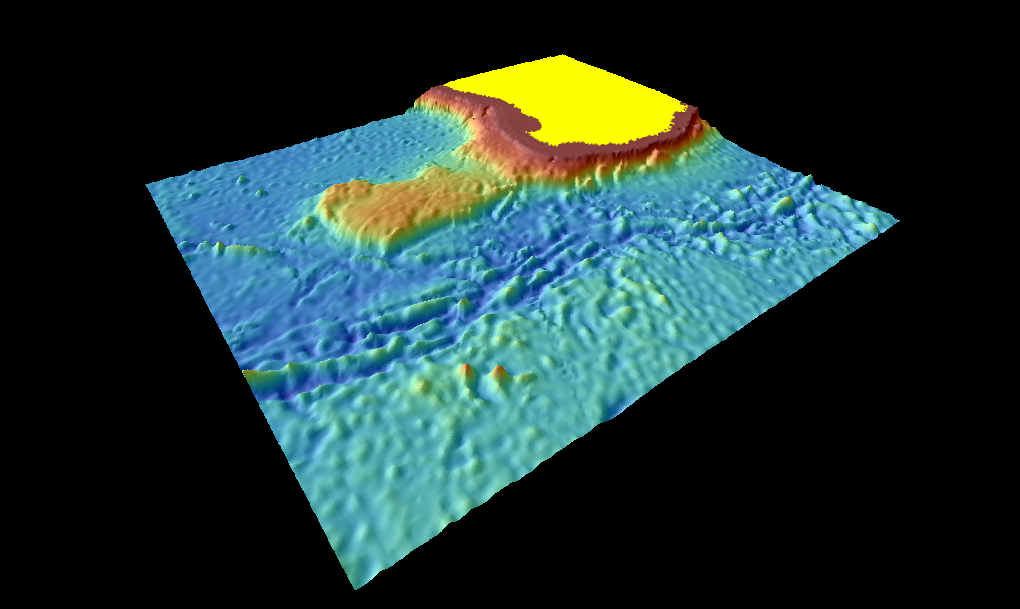Naturaliste Plateau on:
[Wikipedia]
[Google]
[Amazon]
 The Naturaliste Plateau is one of several large submarine plateaus extending from
The Naturaliste Plateau is one of several large submarine plateaus extending from
.
 The Naturaliste Plateau is one of several large submarine plateaus extending from
The Naturaliste Plateau is one of several large submarine plateaus extending from Western Australia
Western Australia (WA) is the westernmost state of Australia. It is bounded by the Indian Ocean to the north and west, the Southern Ocean to the south, the Northern Territory to the north-east, and South Australia to the south-east. Western Aust ...
into the Indian Ocean
The Indian Ocean is the third-largest of the world's five oceanic divisions, covering or approximately 20% of the water area of Earth#Surface, Earth's surface. It is bounded by Asia to the north, Africa to the west and Australia (continent), ...
. It is a rectilinear plateau that covers an area of 90,000 square kilometres. Its width is about east-west and north-south. The water depths are from 1500 to 5000 metres.
The Mentelle Basin and Naturaliste Trough lie between the mainland and this plateau. The plateau is bordered by the Perth Abyssal Plain in the north and west and the Australian–Antarctic Basin in the south.Naturaliste Plateau: Regional setting.
Geoscience Australia
Geoscience Australia is a statutory agency of the Government of Australia that carries out geoscientific research. The agency is the government's technical adviser on aspects of geoscience, and serves as the repository of geographic and geolo ...
.
It is located within the Australian marine park known as the South-west Corner Marine Park.
The Naturaliste Plateau formed during the Early Cretaceous 136 Ma when Australia and India broke up and during the Late Cretaceous 83 Ma when Australia and Antarctica broke up. Lavas and intrusive rocks on the plateau flanks have ages of between 132 and 128 Ma. The volcanic sequence that consists of alternating basaltic flows and volcaniclastic beds, cut by multiple dikes, was recovered at IODP Site U1513 on the eastern flank. After the volcanic eruption, the Naturaliste Plateau subsided from shelf to bathyal depths during the Early Cretaceous. The eastern flank of the plateau slopes relatively gently, while the other three flanks are relatively steep. The southern flank formed during the Australia-Antarctica break-up, the other flanks during the rifting between India and Australia. The continent ocean transition (COT) is wide on the north side and on the southern side where the plateau is flanked by the Diamantina fracture zone.
Before India broke off from Australia-Antarctica at 127 Ma, the Naturaliste Plateau was flanked by what would become two microcontinent
Continental crustal fragments, partly synonymous with microcontinents, are pieces of continents that have broken off from main continental masses to form distinct islands that are often several hundred kilometers from their place of origin.
Caus ...
s: the Batavia and Gulden Draak Knolls, which are now located on the western margin of the Perth Abyssal Plain from Australia. South of the plateau, during some 45 Ma after India and the two knolls broke off, rifting occurred between the plateau and the Bruce Rise, now located off Antarctica. This rifting continued until sea-floor spreading began 83 Ma.
Continental metamorphic
Metamorphic rocks arise from the transformation of existing rock to new types of rock in a process called metamorphism. The original rock (protolith) is subjected to temperatures greater than and, often, elevated pressure of or more, causi ...
and granitic
A granitoid is a broad term referring to a diverse group of coarse-grained igneous rocks that are widely distributed across the globe, covering a significant portion of the Earth's exposed surface and constituting a large part of the continental ...
basement rock
In geology, basement and crystalline basement are crystalline rocks lying above the mantle and beneath all other rocks and sediments. They are sometimes exposed at the surface, but often they are buried under miles of rock and sediment. The baseme ...
s have been dredged from both knolls. Protolith
A protolith () is the original, unmetamorphosed rock from which a given metamorphic rock is formed.
For example, the protolith of a slate is a shale or mudstone. Metamorphic rocks can be derived from any other kind of non-metamorphic rock and ...
granite from Gulden Draak was emplaced in either the Australian Yilgarn craton or the Antarctic Mawson Craton
The Mawson Continent (or Mawson Block, Mawson Craton) was a continent that may have formed around about 1730 Ma (1,730 million years ago).
It included the Gawler craton of southern Australia and correlated terrains in Antarctica.
Since very littl ...
2850 Ma. The Mesoproterozoic crust from this knoll is coeval with crust from the Naturaliste Plateau. Neoproterozoic
The Neoproterozoic Era is the last of the three geologic eras of the Proterozoic geologic eon, eon, spanning from 1 billion to 538.8 million years ago, and is the last era of the Precambrian "supereon". It is preceded by the Mesoproterozoic era an ...
-Cambrian
The Cambrian ( ) is the first geological period of the Paleozoic Era, and the Phanerozoic Eon. The Cambrian lasted 51.95 million years from the end of the preceding Ediacaran period 538.8 Ma (million years ago) to the beginning of the Ordov ...
(540–530 Ma) granite gneiss
Gneiss (pronounced ) is a common and widely distributed type of metamorphic rock. It is formed by high-temperature and high-pressure metamorphic processes acting on formations composed of igneous or sedimentary rocks. This rock is formed under p ...
es from the Batavia Knoll were emplaced during or after the formation of the Kuunga Orogen.
References
; Notes ; Sources * {{coord, -34.1, 111.3, dim:500000_region:AU, display=title Plateaus of the Indian Ocean Coastline of Western Australia Exclusive economic zone of Australia